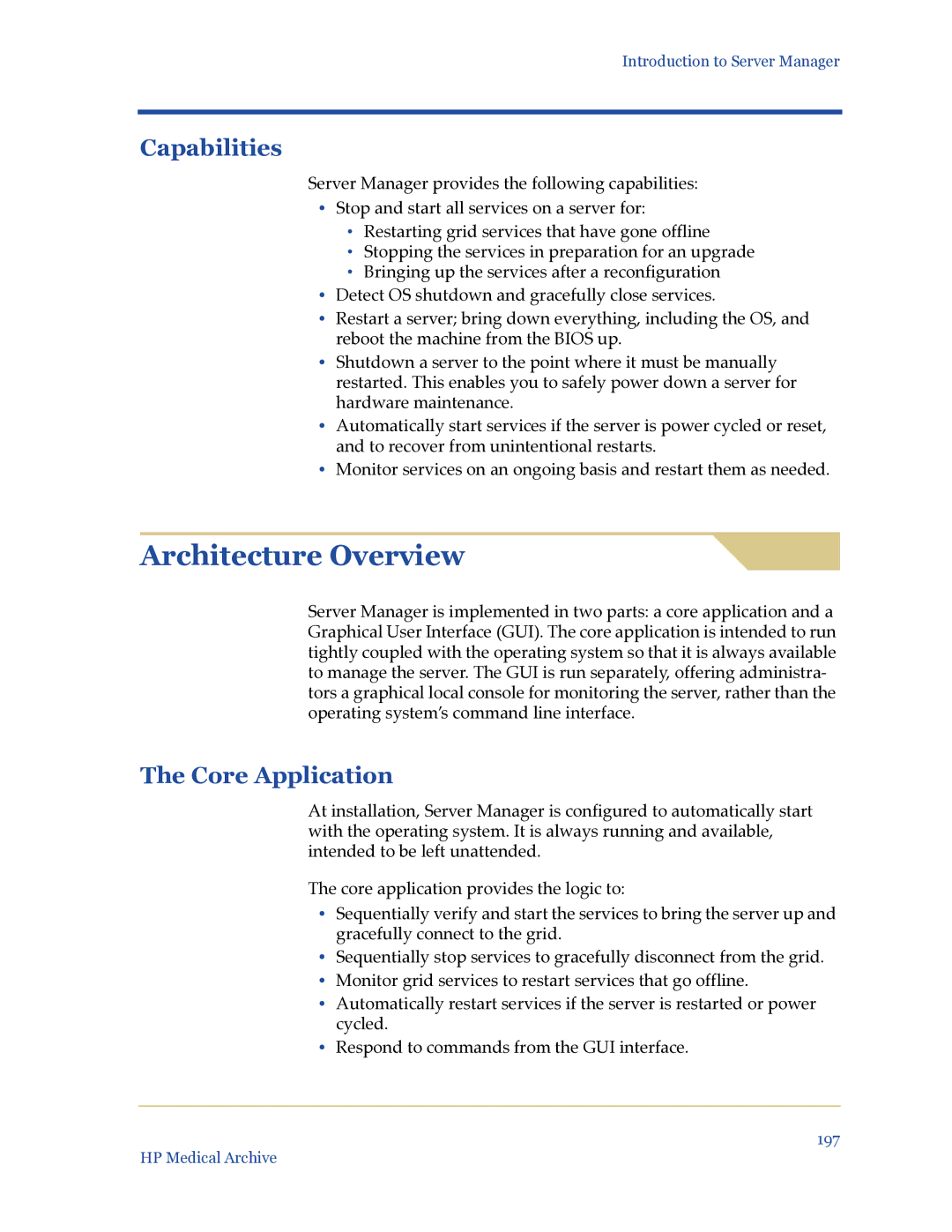
Introduction to Server Manager
Capabilities
Server Manager provides the following capabilities:
•Stop and start all services on a server for:
•Restarting grid services that have gone offline
•Stopping the services in preparation for an upgrade
•Bringing up the services after a reconfiguration
•Detect OS shutdown and gracefully close services.
•Restart a server; bring down everything, including the OS, and reboot the machine from the BIOS up.
•Shutdown a server to the point where it must be manually restarted. This enables you to safely power down a server for hardware maintenance.
•Automatically start services if the server is power cycled or reset, and to recover from unintentional restarts.
•Monitor services on an ongoing basis and restart them as needed.
Architecture Overview
Server Manager is implemented in two parts: a core application and a Graphical User Interface (GUI). The core application is intended to run tightly coupled with the operating system so that it is always available to manage the server. The GUI is run separately, offering administra- tors a graphical local console for monitoring the server, rather than the operating system’s command line interface.
The Core Application
At installation, Server Manager is configured to automatically start with the operating system. It is always running and available, intended to be left unattended.
The core application provides the logic to:
•Sequentially verify and start the services to bring the server up and gracefully connect to the grid.
•Sequentially stop services to gracefully disconnect from the grid.
•Monitor grid services to restart services that go offline.
•Automatically restart services if the server is restarted or power cycled.
•Respond to commands from the GUI interface.
197
HP Medical Archive
